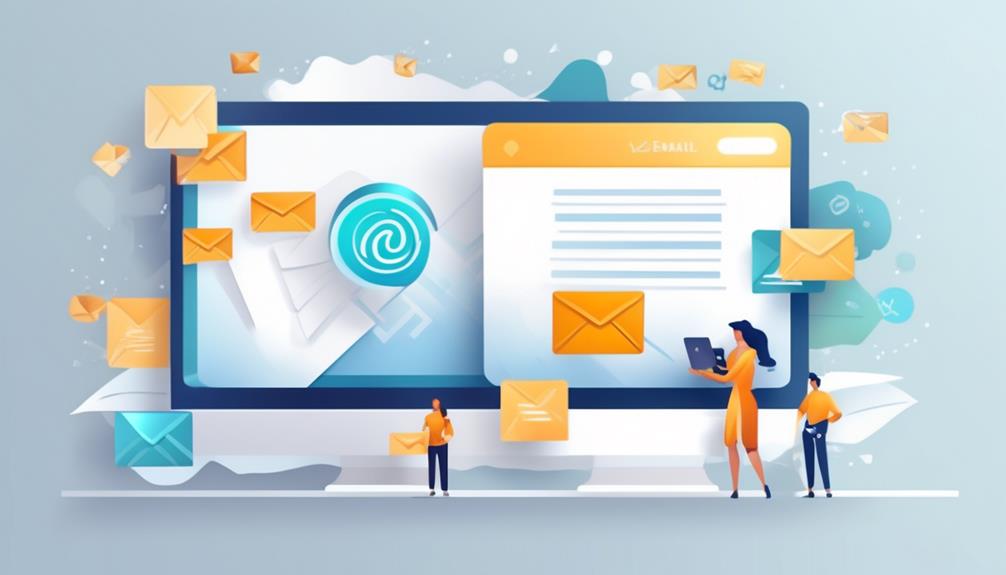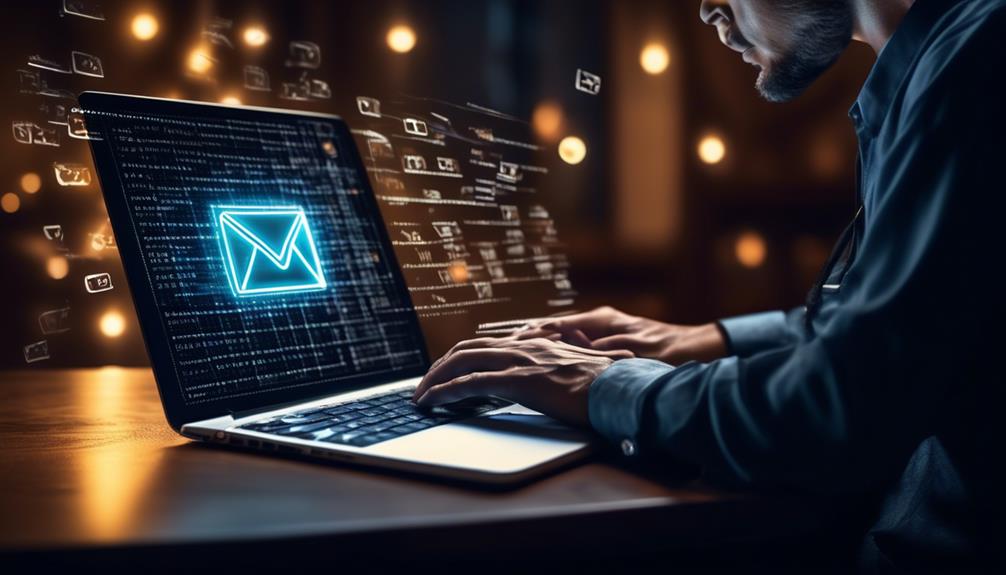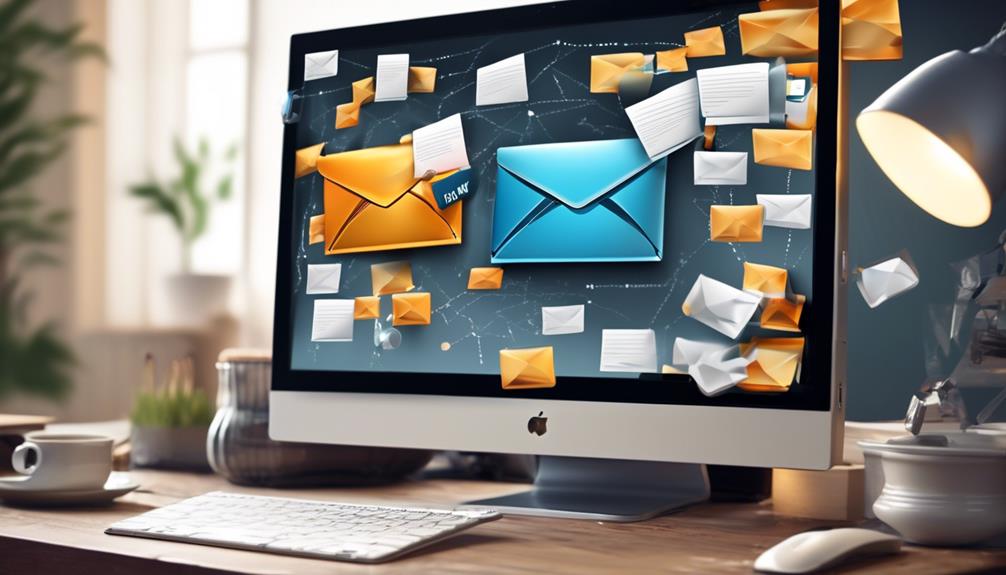As we deal with the complexities of modern communication, the topic of how to properly indicate time zones in emails remains a matter of discussion. Addressing this matter accurately and clearly is crucial to guarantee effective communication across different locations.
In our discussion, we will explore the nuances of time zone representation, shedding light on best practices and common pitfalls that can influence the interpretation of time-related information in email exchanges.
Stay with us to uncover the key strategies that can streamline your communication and prevent misunderstandings in a global context.
Key Takeaways
- Specify the standard time zone to avoid confusion.
- Use abbreviations for quick reference points but spell out full forms for better comprehension.
- Capitalize the full name of the time zone and only the region name when using shorter forms.
- Follow AP Style guidelines for consistency and clarity in time zone abbreviations.
Importance of Time Zone Clarity
Understanding time zone clarity is crucial for avoiding scheduling conflicts and ensuring effective global collaboration. When dealing with individuals in different time zones, it's vital to specify the standard time zone to prevent any confusion. Consistent time zone writing is key to preventing errors in scheduling and ensuring that meetings are set at the right time.
One useful tool for determining the correct meeting time across different time zones is a time zone converter, such as Time and Date's converter. By inputting the respective time zones of all parties involved, the converter can provide a standardized time that works for everyone.
To further enhance clarity, it's essential to include Coordinated Universal Time (UTC) in conference call invitations. This practice helps to avoid issues like crossing the international date line, which can lead to misunderstandings regarding the meeting time.
Choosing Between Abbreviations and Full Forms

When coordinating global collaboration and setting up meetings, clarity in specifying time zones becomes paramount, whether through abbreviations like EST or full forms such as Eastern Standard Time. When choosing between abbreviations and full forms for time zones, consider the following:
- Abbreviations for Efficiency: Abbreviations like EST, EDT, and CST are commonly used when brevity is key, especially in the context of a clock reading. They provide a quick reference point for time zones without taking up much space.
- Full Forms for Clarity: Spell out time zones such as Eastern Standard Time, Eastern Daylight Time, and Central Standard Time when a clock reading isn't explicitly mentioned. This offers a more detailed explanation of the time zone for better comprehension.
- Consistency in Style: Whether you capitalize or lowercase full forms of time zones like Eastern Standard Time or Central Standard Time should align with chosen style guidelines, such as those provided by Chicago or AP, to maintain uniformity in your writing.
Proper Capitalization Rules

For proper capitalization rules related to time zones, always capitalize the full name of the time zone, such as Eastern Standard Time or Pacific Standard Time. When using shorter forms like Eastern time zone or Mountain time, only capitalize the region name. Abbreviations like EST and PST should only be used alongside a clock reading, such as noon EST or 9 a.m. PST. Remember not to separate these abbreviations with commas. If referencing time zones without a specific time, spell them out completely, for example, Chicago is in the Central time zone.
To emphasize the importance of proper capitalization in time zones, let's take a look at the following table that showcases the correct capitalization rules for some common time zones:
| Full Name | Short Form | Abbreviation |
|---|---|---|
| Eastern Standard Time | Eastern time zone | EST |
| Pacific Standard Time | Pacific time zone | PST |
| Central Daylight Time | Central time zone | CDT |
| Mountain Standard Time | Mountain time zone | MST |
| Alaska Standard Time | Alaska time zone | AKST |
Using Periods in Time Zone Abbreviations

Moving from discussing proper capitalization rules for time zones, let's now shift our focus to the correct usage of periods in time zone abbreviations according to AP Style guidelines. When it comes to incorporating periods in time zone abbreviations, it's essential to follow the guidelines set forth by the AP Stylebook for consistency and clarity in your writing.
Here are three key points to remember when using periods in time zone abbreviations:
- Central Standard Time: When abbreviating time zones like Central Standard Time, the correct format is 'CST' without periods after each letter. This format adheres to the AP Stylebook guidelines for abbreviation usage.
- AP Stylebook Rules: The AP Stylebook advises against inserting periods after the letters of a time zone abbreviation. This rule applies to abbreviations with all capital letters, maintaining a clean and uniform appearance in your writing.
- Daylight Savings Time: When referencing Daylight Saving Time, remember not to include periods in the abbreviation, following the standard practice of omitting internal punctuation in all capital letter abbreviations.
Best Practices for Punctuation Around Time Zones
Implementing consistent punctuation practices around time zones is crucial for maintaining clarity and professionalism in written communication.
When mentioning time zones like Central, Pacific Standard Time, or Eastern Standard Time, it's essential to use the correct punctuation to ensure clarity.
In formal writing styles like AP Style, it's recommended to use the full name of the time zone, such as Pacific Standard Time. When using abbreviations, make sure they're easily understood, especially when paired with specific times like 9 a.m. MST or noon PST.
For short forms, lowercase all words except for the region, such as 'the Central time zone' or 'Mountain time.'
Consistency in capitalization and punctuation is key to avoid confusion.
Frequently Asked Questions
How Do You Specify Time Zone in Email?
When we're communicating via email and mentioning specific times, it's crucial to include the time zone to avoid any confusion. This practice ensures that all parties involved are on the same page regarding the scheduled time.
How Do You Write Time Zones in a Sentence?
When writing about time zones in a sentence, it's crucial to be consistent and clear. Using full names like Eastern Standard Time or abbreviations like EST can help avoid confusion. Remember to lowercase all words except for the region when using short forms.
Employing proper time zone conventions, such as 'the Central time zone' or '9 a.m. MST,' ensures effective communication in your writing. Consistency is key for clarity and precision.
How Do I Show Timezone in My Email Signature?
Sure, when showing a time zone in an email signature, it's essential to add the abbreviation after the time to specify the specific time zone. This helps avoid confusion, especially when communicating with people in different time zones.
It's important to capitalize the full name of a time zone and only capitalize the first part when using a shortened version. Using acceptable abbreviations and avoiding unnecessary periods or commas is also crucial.
How Do You Write Time in Time Zone?
We write time in time zones like a well-oiled machine, smoothly transitioning from one region to the next.
It's crucial to include the full name of the time zone when writing in AP Style. Abbreviations are acceptable, especially when paired with a clock reading, but remember to lowercase everything except the region in short forms.
Proper nouns should be capitalized even when time zones are lowercased, and avoid using periods or commas in time zone abbreviations.
Should I Mention the Time Zone in my Email when Requesting Time off?
When writing an email for time off, it’s important to consider the recipient’s time zone. Mentioning the specific time zone in your request can help avoid any confusion and ensure that your message is clear and easily understood. This small detail can make a big difference in communication.
Conclusion
In conclusion, clarity in writing time zones in emails is crucial for effective communication. While some may argue that using abbreviations is quicker, opting for the full name of the time zone can prevent confusion.
By following proper capitalization rules and punctuation guidelines, you can ensure that your message is easily understood by recipients in different time zones.
Remember, clear and consistent communication is key.










